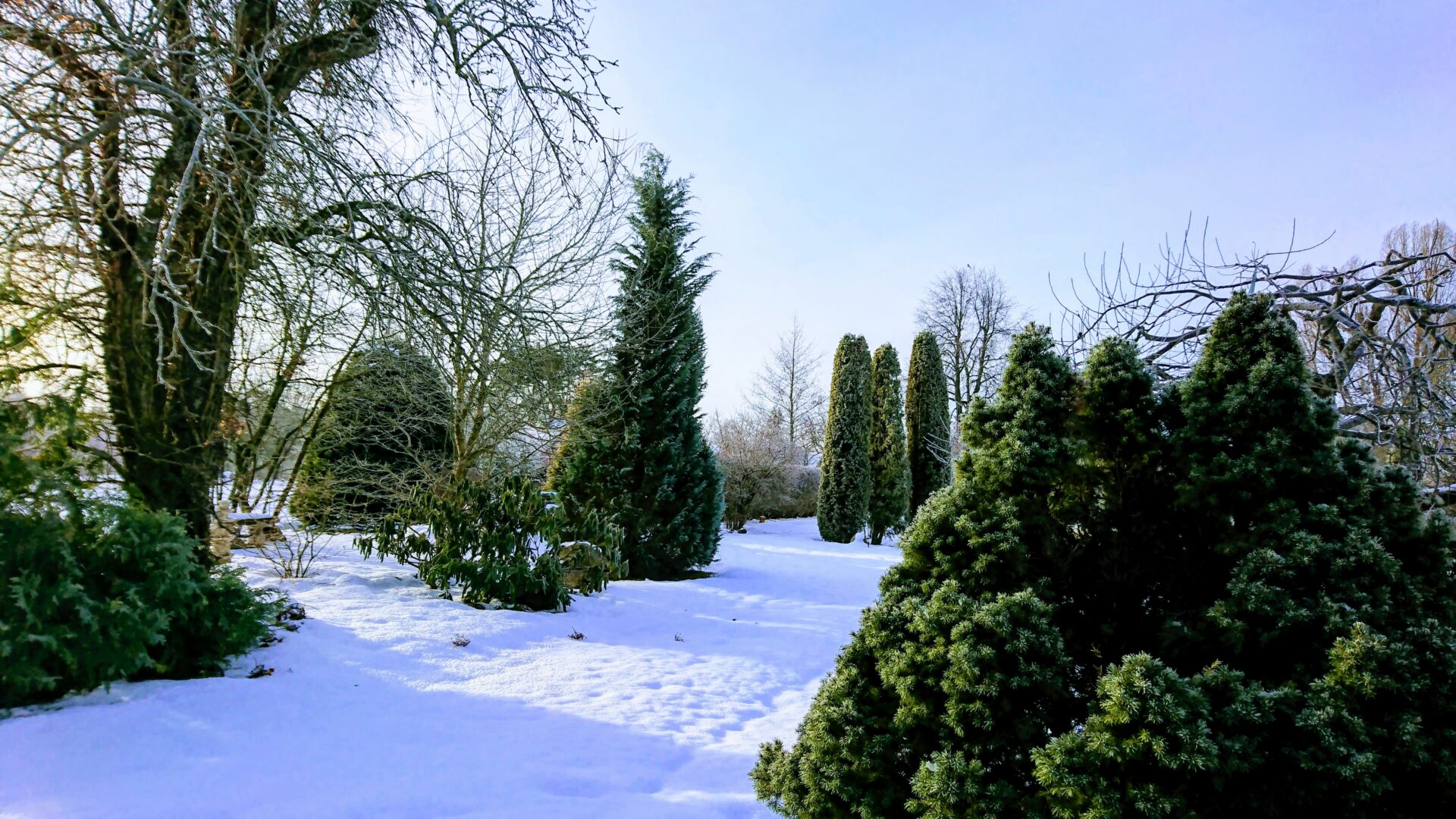Alustuseks peab ütlema, et no ei ole ma kohe mitte talveinimene. Seetõttu on ka talvisest aiast vähe pilte tehtud. Kuna talvine aed peab aga silma rõõmustama ka aknast välja vaadates, siis sai kohe alguses esmajärjekorras hakatud aeda istutama okaspuid, et oleks struktuuri ja värvi ja silmarõõmu. Kõik ikka selleks, et talvel välja vaadates poleks ainult “igav liiv ja tühi väli”. Kõige varajasem pilt pärineb 2010/2011 talvest, kui lund sadas nii palju, et selle ladustamisega hakkas juba probleeme tekkima. Pildilt on näha, kuidas kiviktaimlas, mis muidu on terrassist tükk maad madalam, on lund nii palju, et seda tuli lõpuks lausa ülesmäge lükata, et terrassivalgustus lumme ei upuks.
To begin with, I must say that I am not a winter person. Therefore, few pictures have been taken of the winter garden. Since the winter garden has to please the eye even when looking out of the window, conifers were planted in the garden as a priority right from the beginning, so that there would be structure and color and eye candy. All so that when you look outside in winter, it’s not just “boring sand and an empty field”. The earliest picture comes from the winter of 2010/2011, when it snowed so much that problems began to arise with its storage. The picture shows how there is so much snow in the rock garden, which is otherwise a lot lower than the terrace, that it had to be pushed uphill in the end so that the terrace lighting would not drown in the snow.
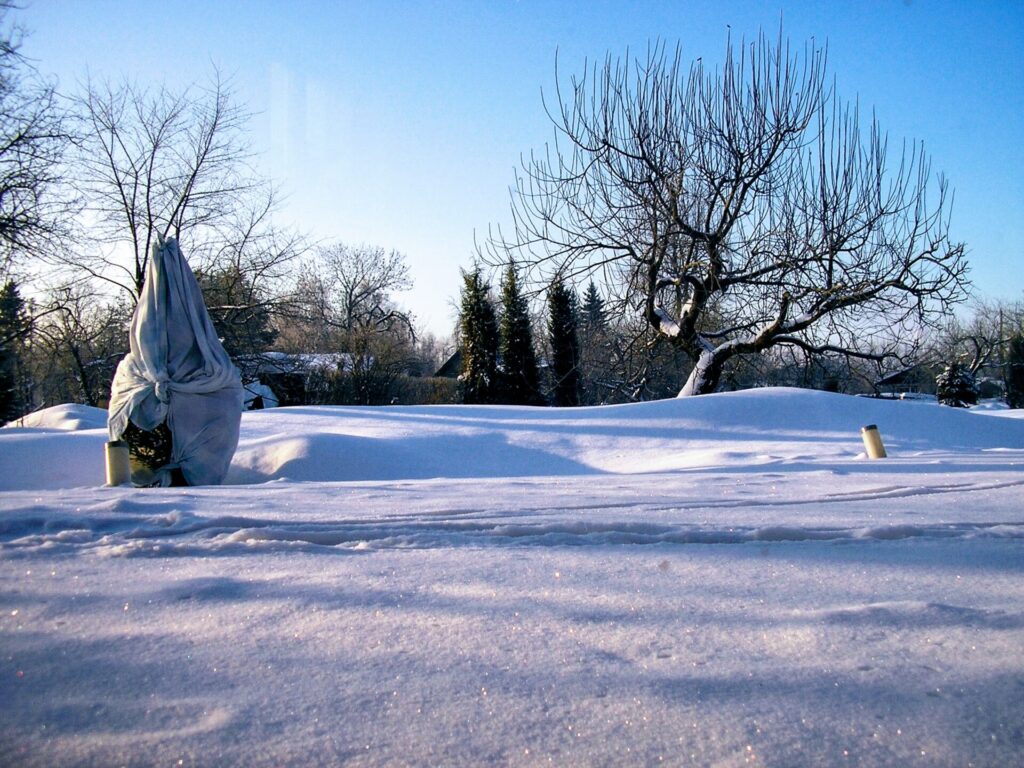
Õnneks oli kevadine sula sama kiire kui talvine sadu ja kõik kiviktaimla elanikud elasid selle talve kenasti üle. Küll aga kaotas päikese eest kenasti sissemässitud kanada kuusk Conica oma lumepiirist ülespoole jäänud ladva.
Fortunately, the spring thaw was just as quick as the winter snowfall, and all the inhabitants of the rock garden survived this winter just fine. However, the Canadian spruce Conica, nicely wrapped up from the sun, lost its top above the snow line.

Talved on meie kliimas teatavasti üsna erinevad. Kord on lund ja külma ülearu, kord pole talve ollagi. 2012. aastast pärineb aga pilt, kus 2. aprillil tuli talv korraks tagasi.
Winters are known to be very different in our climate. Sometimes there is snow and extreme cold, sometimes there is no winter at all. However, the picture comes from 2012, where winter came back for a while on April 2.
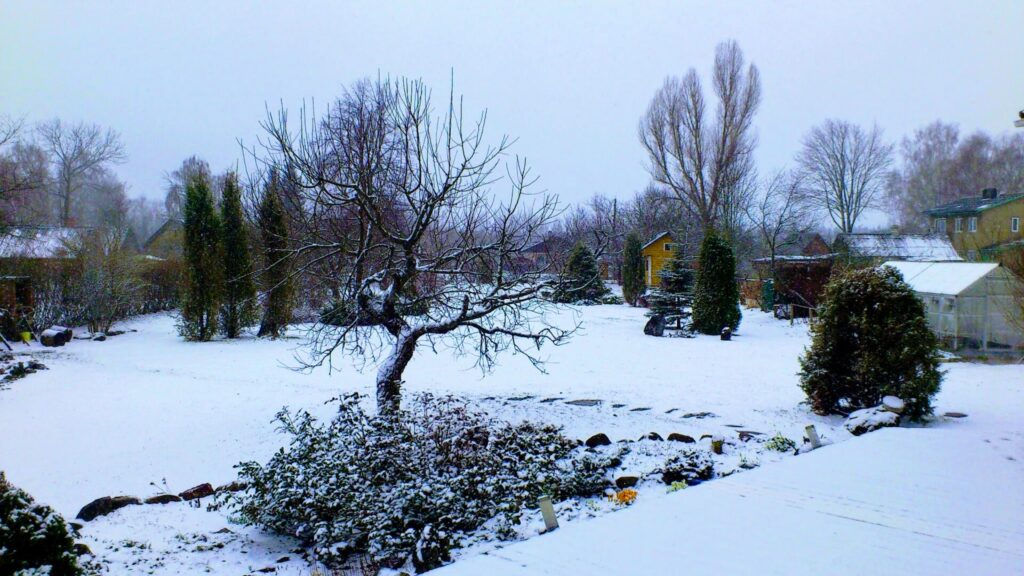
Talvine aed on varem piltidele jäänud enamasti ainult terrassilt vaadatuna. Sel talvel proovisin veidi ringi sumbata ja aeda ka teistest vaatenurkadest pildistada.
In the past, the winter garden has mostly remained in photos only as seen from the terrace. This winter I tried to wander around in the snow a little and take photos of the garden from other angles.
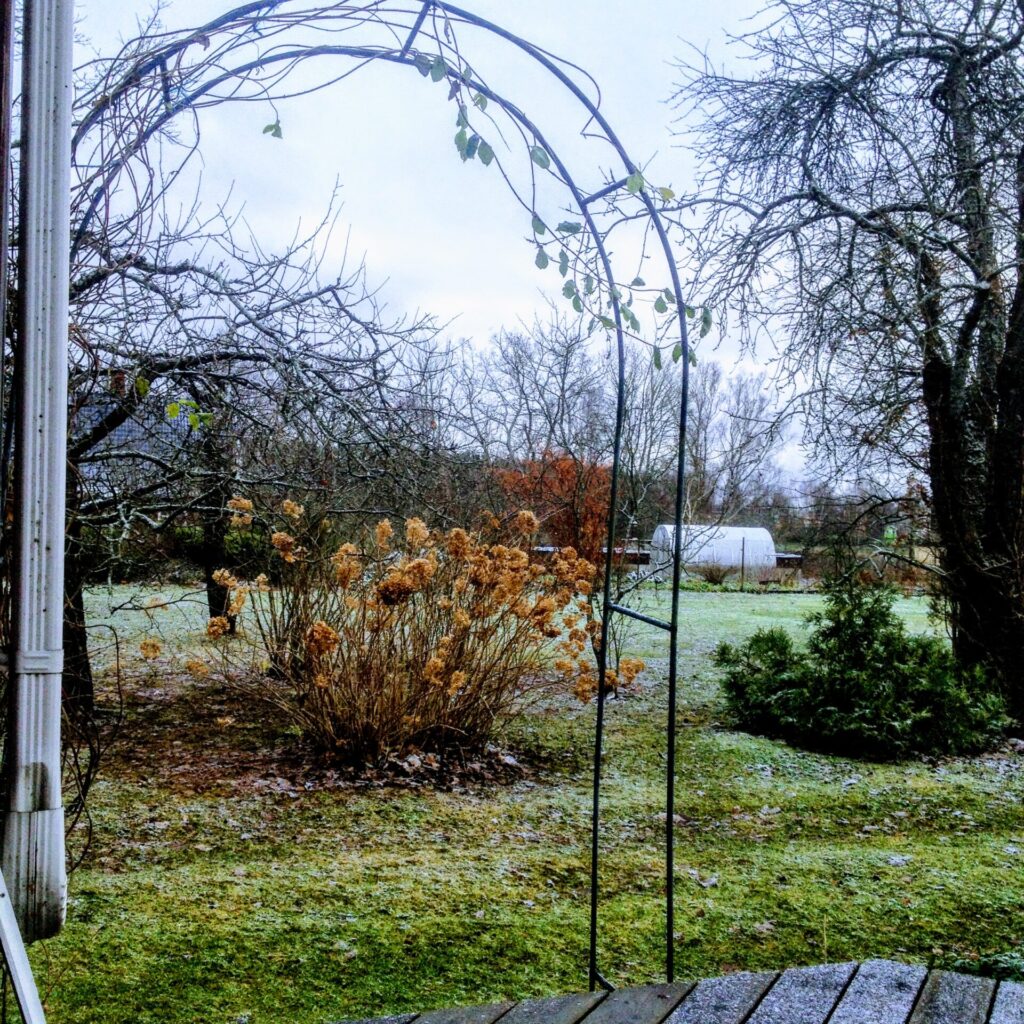
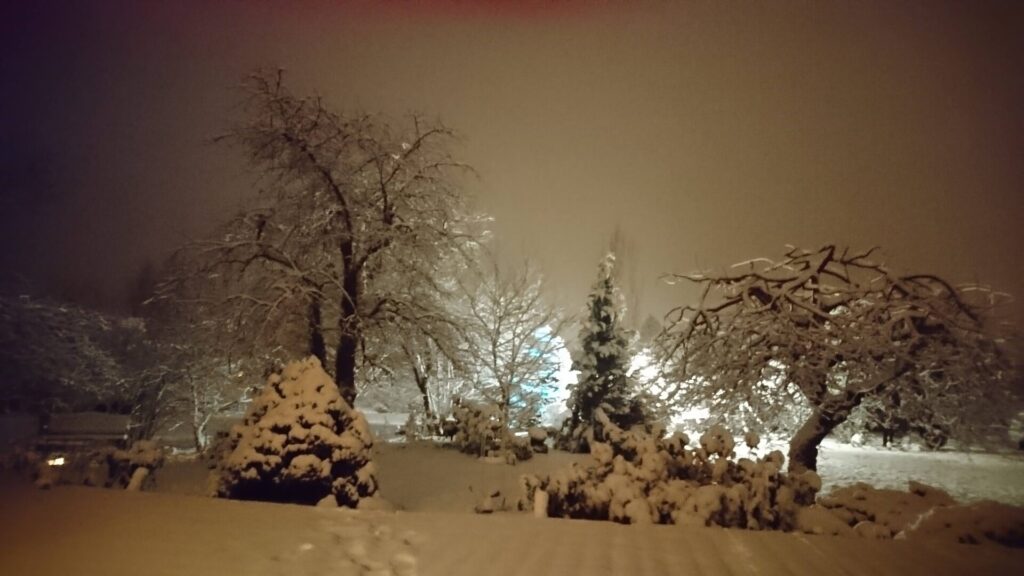
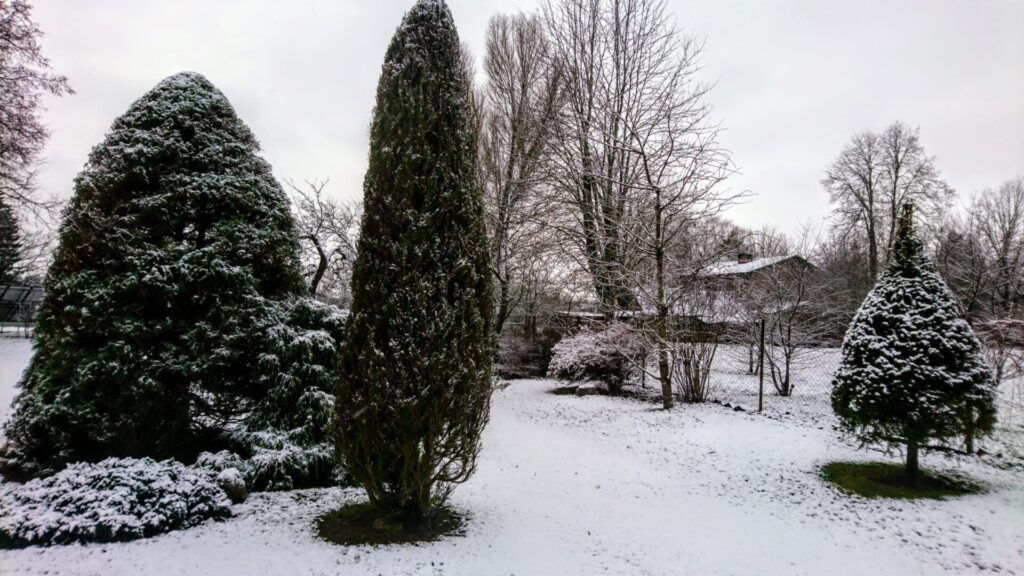
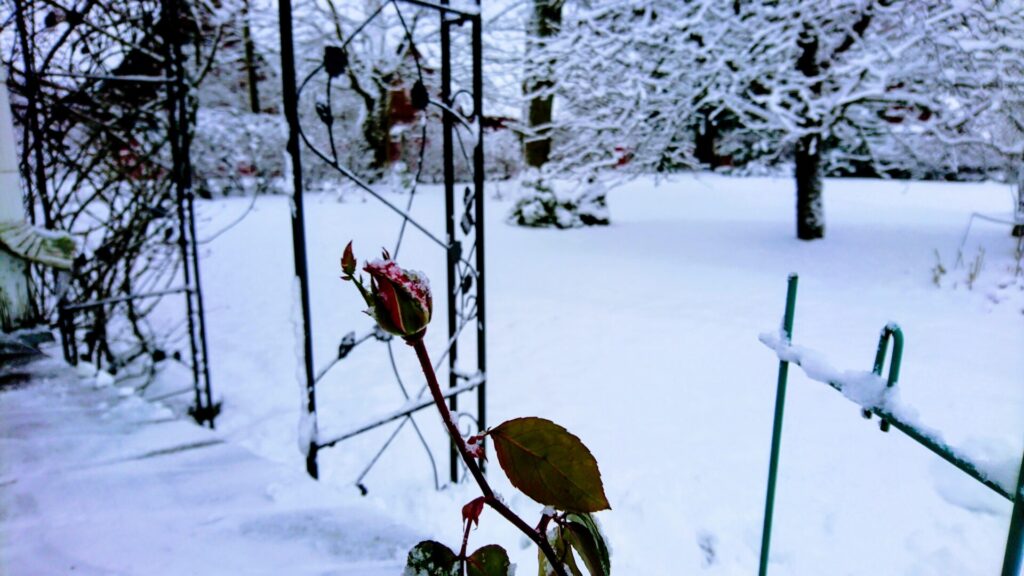
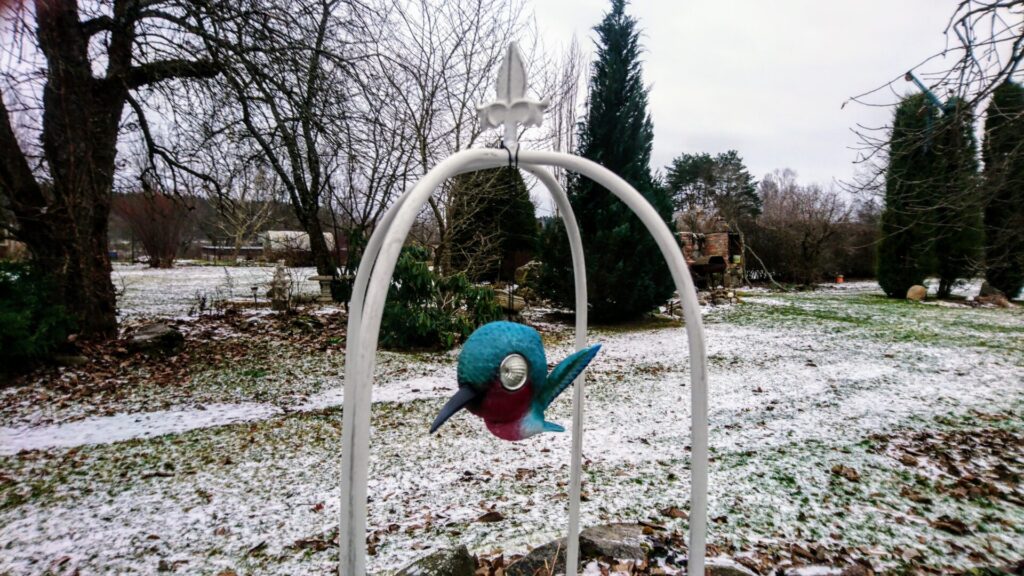
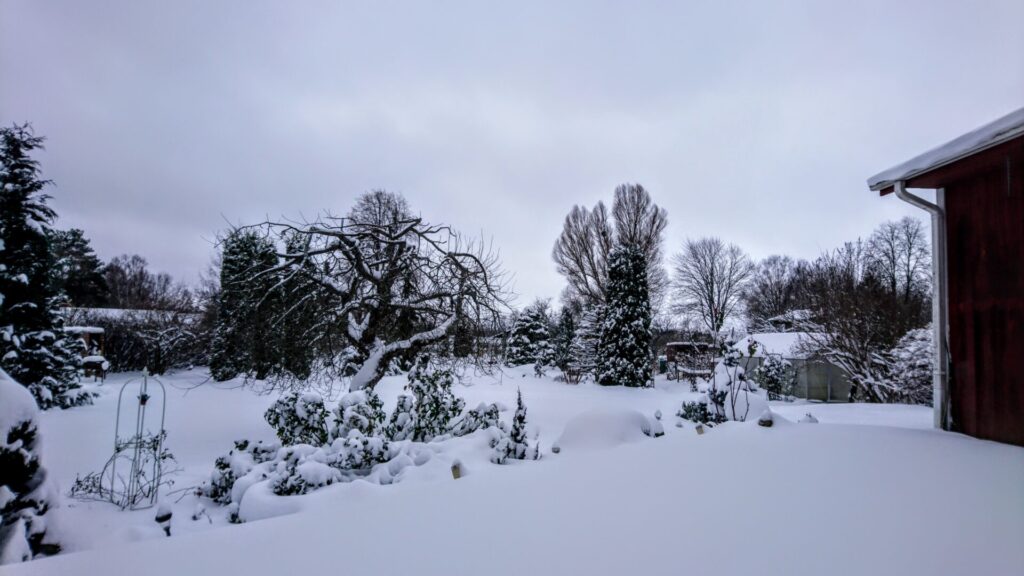
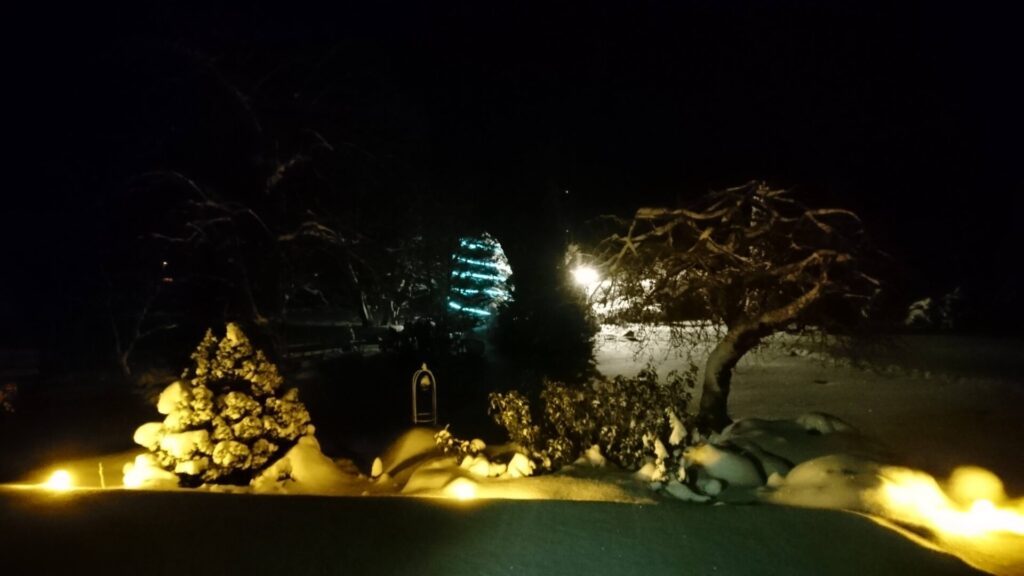
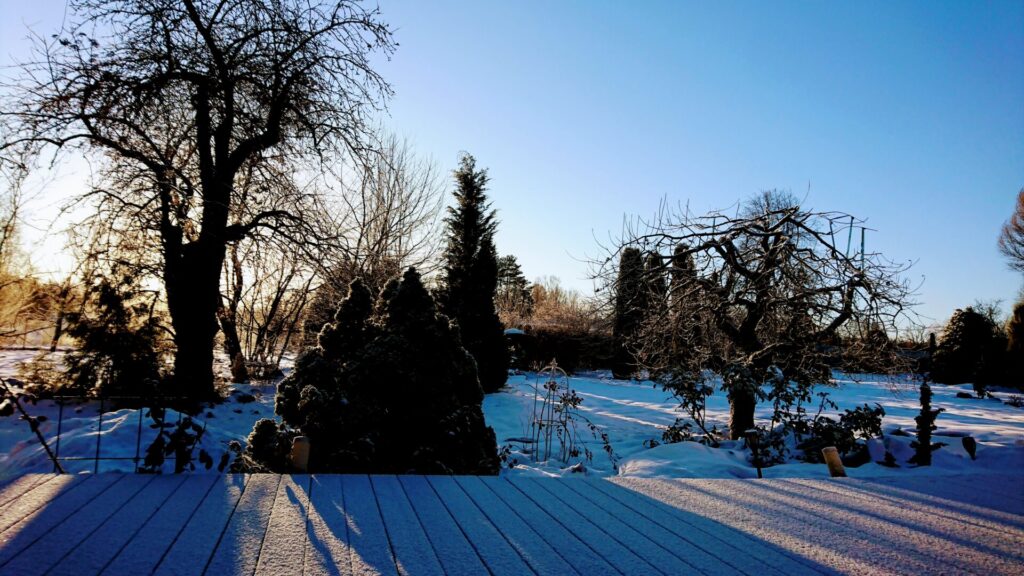
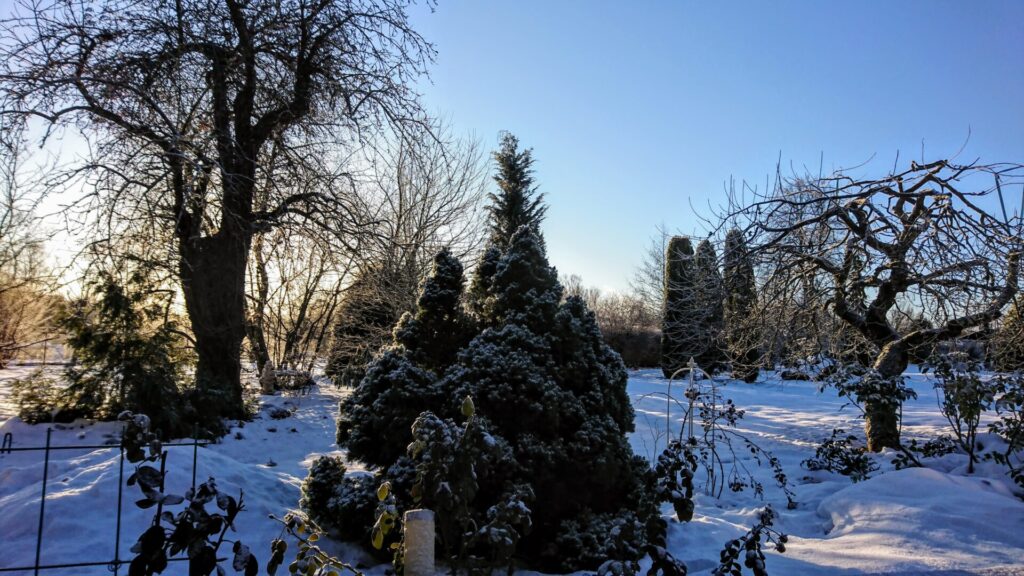
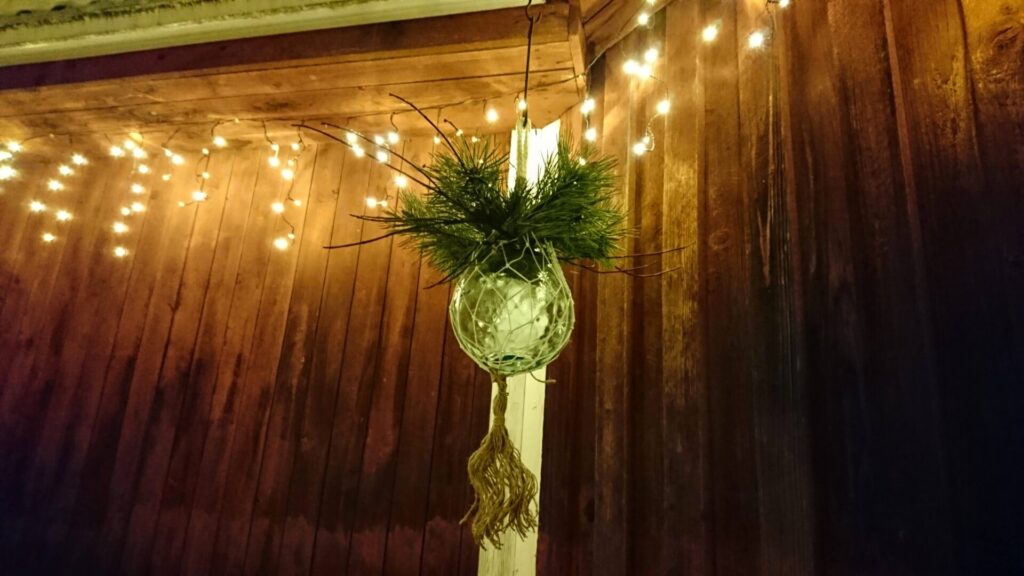

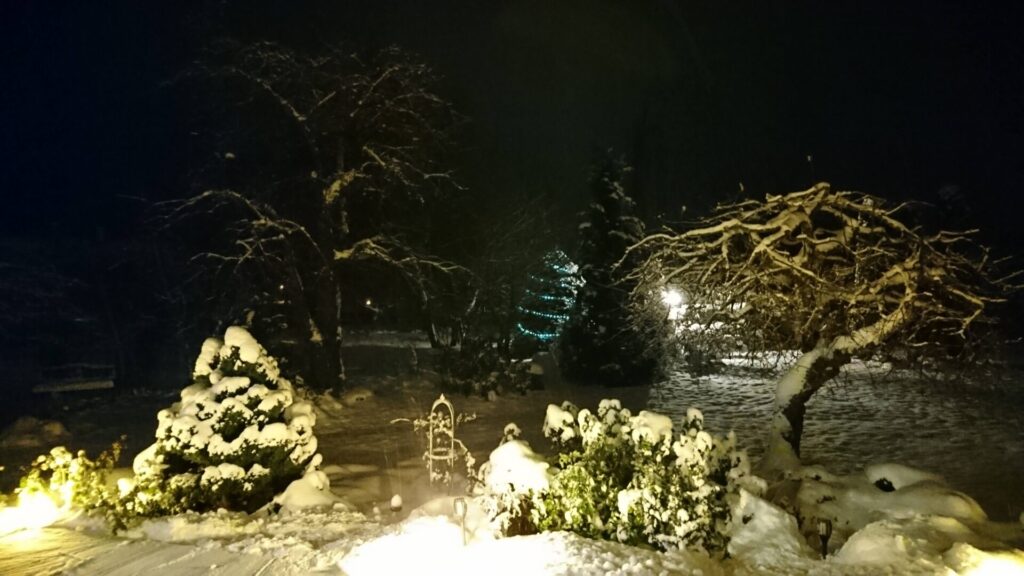
Käesoleva aasta jaanuaris oli aga aeg, kui oli tunne, et kevad on juba kätte jõudnud.
In January of this year, however, there was a time when it felt like spring had already arrived.
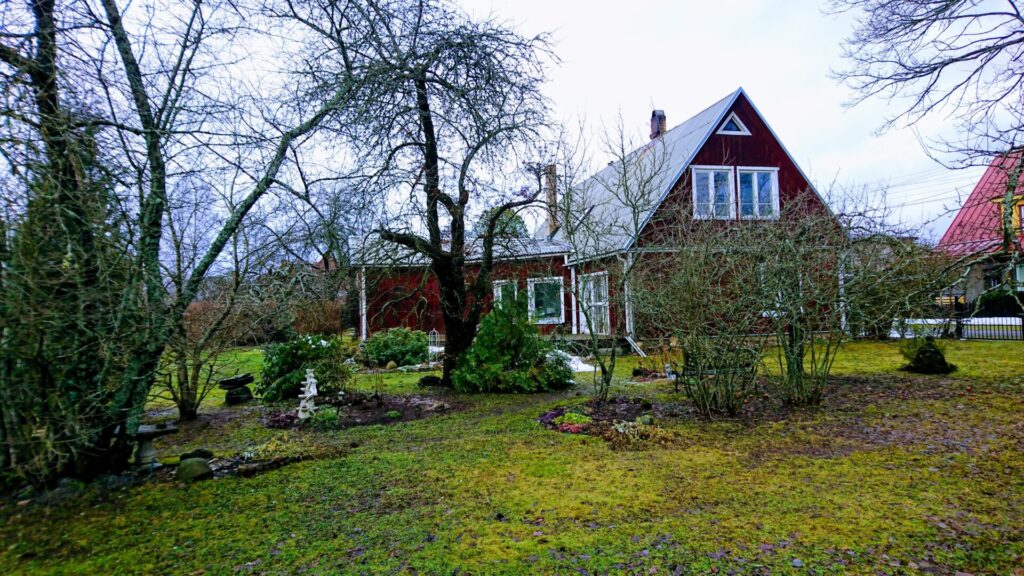
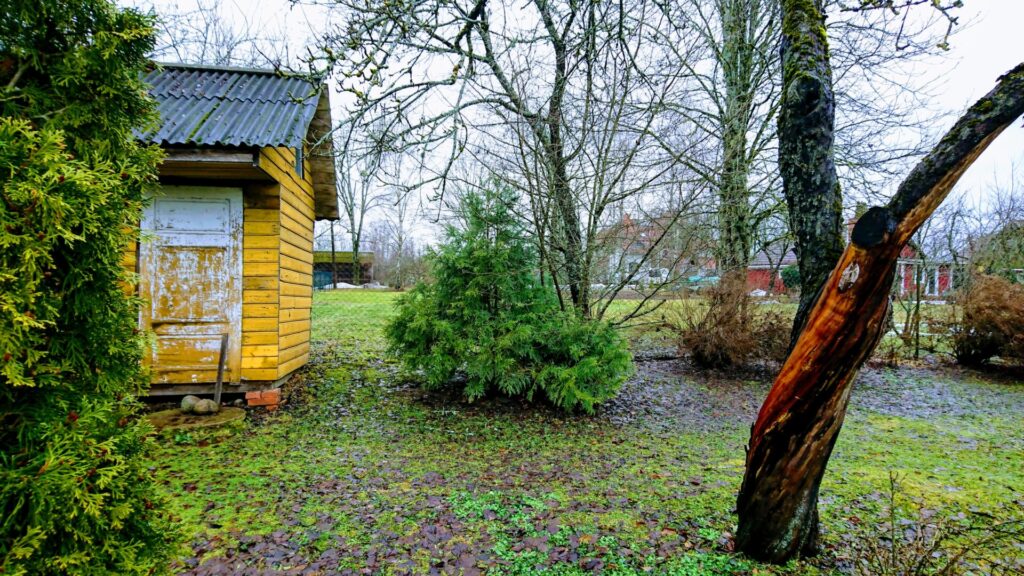
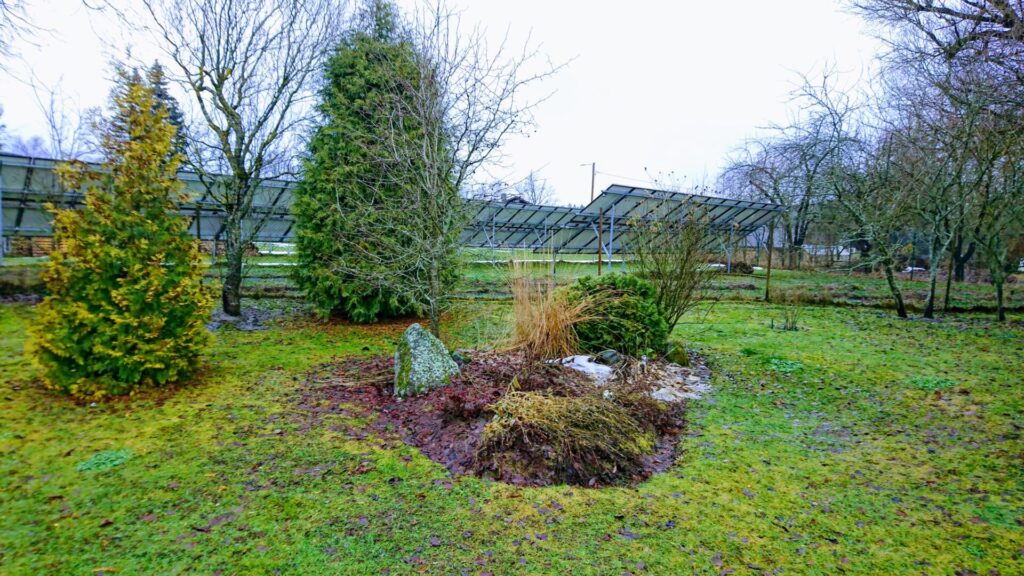
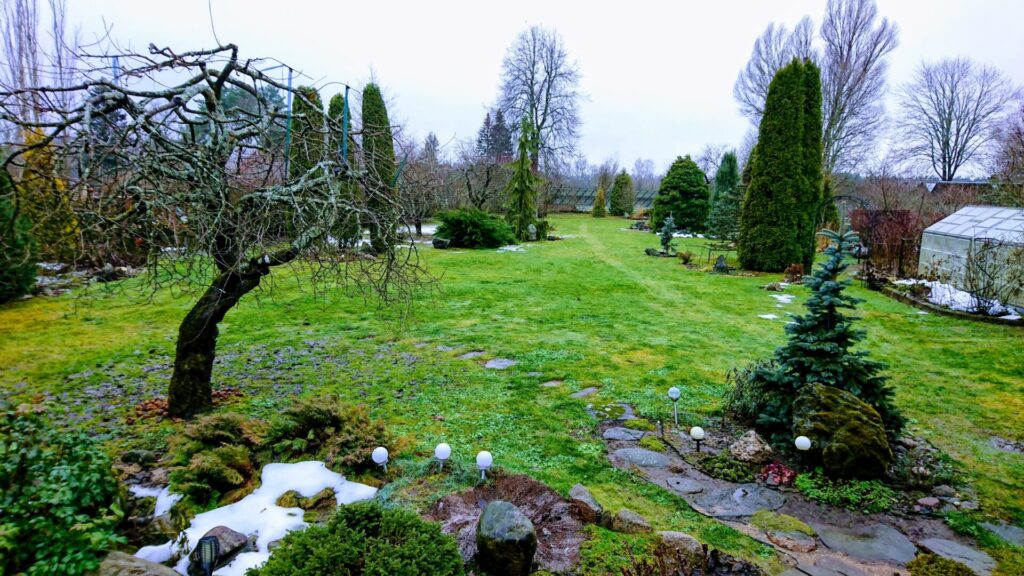
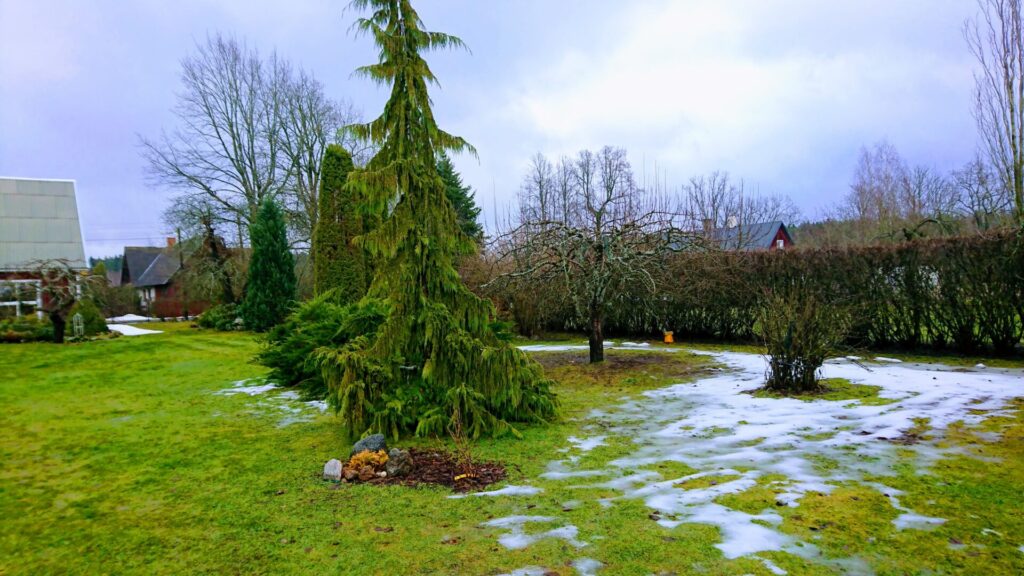
Nüüd aga on käes veebruar ja talv tagasi.
But now it’s February and winter is back.
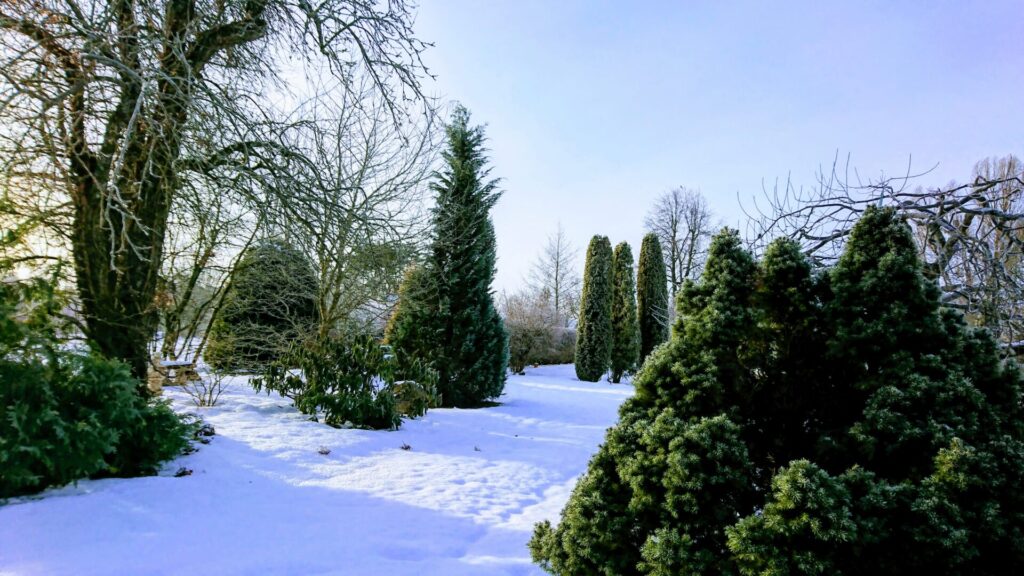
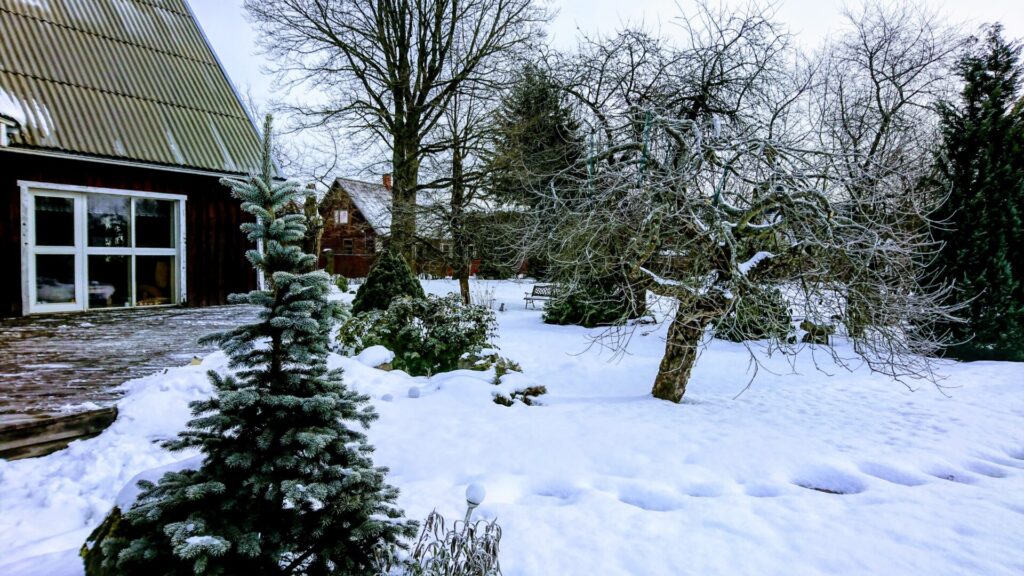
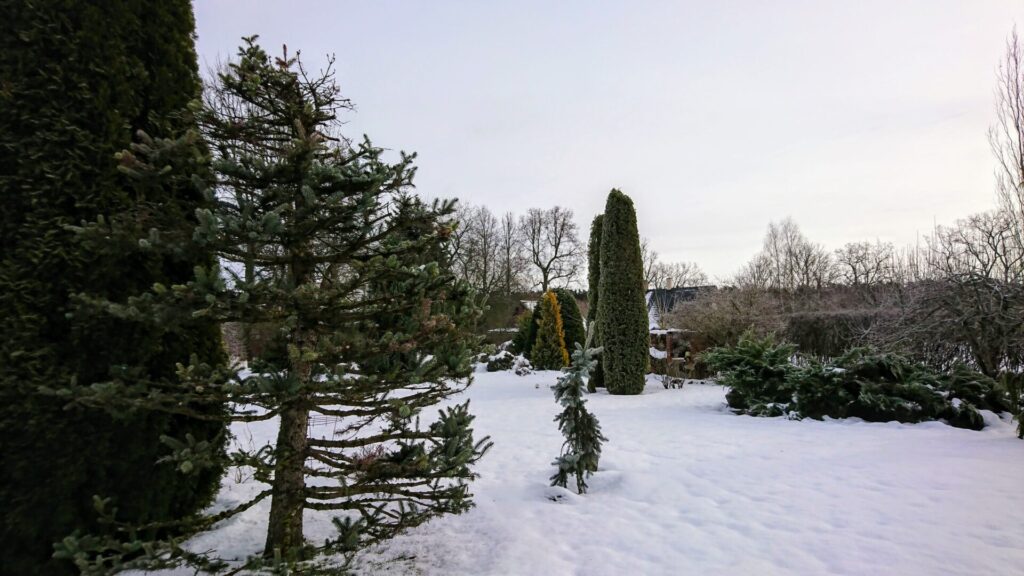
Viimane aeg on minna ja kinni katta varakevadise päikese eest kanada kuusk Conica. Sirmokas küll õnneks väga päikesepõletust ei karda, aga veidi kerget lund peale visata pole talle talveks paha, sest kirjade järgi peaks ta olema meie kliimas veidi külmahell. Meil on ta aga kenasti vastu pidanud juba 2010. aastast. Noh, praegu pole tema jaoks seda kerget lund hetkel küll kusagilt võtta ja ega ilmateadet uskudes seda loodetavasti enam sel talvel vaja polegi. Suviseid pilte neist kahest hellikust saab vaadata okkaliste postitusest.
It’s the last time to go and cover the Canadian spruce Conica from the early spring sun. Fortunately, umbrella pine is not very afraid of sunburn, but it is not bad to throw a little light snow on it for the winter, because according to the letters, it should be a little cold sensitive in our climate. However, he has been with us since 2010. Well, there is nowhere for him to get this light snow at the moment, and if we believe the weather report, hopefully he won’t need it again this winter. You can see summer pictures of these two gentles in the conifers post.

Veel üks päikesekaitset ootav tegelane: pukspuu.
Another character waiting for sun protection: the boxwood.
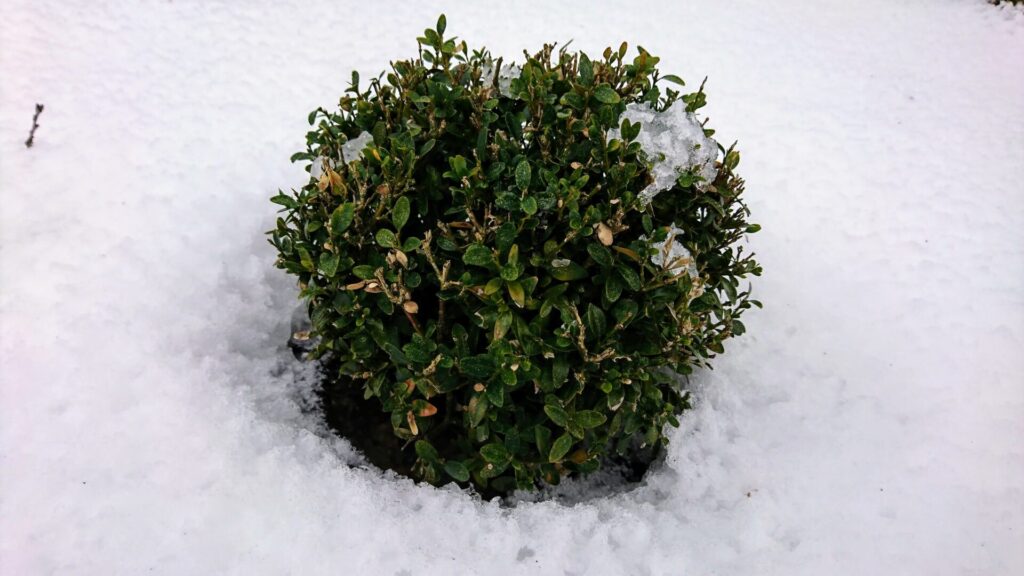
Tegelikult peaks aia talveks ettevalmistamine algama juba sügisel. Varjukangast vajavate taimede ümber peaks püstitama toed, kinni peaks siduma lume raskuse all laiali vajuda võivate põõsaste ja okaspuude oksad. Oleme seda mingil ajal ka teinud, aga vahel tuleb lumi väga varakult maha ja oktoobris ei taha veel kuidagi maassetaotud tokimerd ja kokkuseotud taimi vaadata. Ja üleüldse: eesmärk on ju, et taimed saavad enam-vähem ise hakkama. Õppetunnid on kätte saadud ja omad järeldused tehtud. Kerajad elupuud Danica on nii mõnelgi talvel laiali vajunud, aga õnneks on nad alati juba juunikuu jooksul kenasti taastunud. Keerulisem on kaljukadakaga, keda esimestel aastatel igaks talveks kokku sidusin. Kõigest vaevanägemisest hoolimata vajusid tal ikka kenad püstised oksad kogu aeg laiali. Siis selgus tõsiasi, et see kadakas püsib püstiste okstega vaid tänu pügamisele. Nüüd saab ta kääre peaaegu igal aastal ja talveks kokkusidumine on unustatud. Paksu lund peab aias ikka aeg-ajalt taimedelt maha raputamas käima, aga kui sellega on hiljaks jäädud, aitavad käärid kenasti hädast välja. Keskmine kadakas Mint Julep on kasvanud nii suureks, et ühe ööga maha sadanud lumi on korduvalt suuri oksi maha murdnud. Saen need oksad kevadel maha ja juunis on ta juba ennast ilusaks kasvatanud. Ilmselt oleks muidu pidanud tema kasvu niikuinii piirama, nii et midagi pole halvasti sellest sundpügamisest. Samuti saab kerge varjutuskanga taimede ümber mässida ka ilma tugedeta. Peab ainult jälgima, et see oleks paigaldatud koonusjalt, et lumi saaks maha libiseda. Päris ilma tööta niisiis ei saa, aga mida vanemaks aed saab, seda vähem tööd talveks on, kui taimed suvel korralikult vormis hoida. Veelgi lihtsam variant oleks muidugi selliseid taimi mitte istutada, aga siis läheks vist juba liiga igavaks.
In fact, preparing the garden for winter should start already in autumn. Supports should be erected around plants that need a shade fabric, and the branches of shrubs and conifers that may collapse under the weight of snow should be tied. We have done it for some time, but sometimes the snow falls very early and in October you don’t want to look at the sea of twigs and plants tied together. And in general: the goal is for the plants to manage more or less by themselves. Lessons have been learned and conclusions have been drawn. The arborvitaes Danica have fallen apart in some winters, but luckily they have always recovered nicely during June. It is more complicated with the mountain juniper, which I tied together for every winter in the first years. Despite all the effort, its nice upright branches kept falling apart all the time. Then the fact became clear that this juniper stays with upright branches only thanks to pruning. Now he gets a haircut almost every year, and bundling up for the winter is forgotten. The thick snow still has to be shaken off the plants from time to time in the garden, but if it’s too late, scissors help out nicely. The medium Juniper Mint Julep has grown so large that the snow that fell overnight has repeatedly broken off large branches. I cut these branches off in the spring and in June it has already grown beautiful. Apparently, otherwise his growth should have been limited anyway, so there is nothing wrong with this forced pruning. Also, a light shading fabric can be wrapped around plants without supports. You just have to make sure that it is installed vertically so that the snow can slide off. So you can’t really do without work, but the older the garden gets, the less work there is for the winter if the plants are kept in good shape in the summer. Of course, an even easier option would be not to plant such plants, but then it would probably be too boring.
